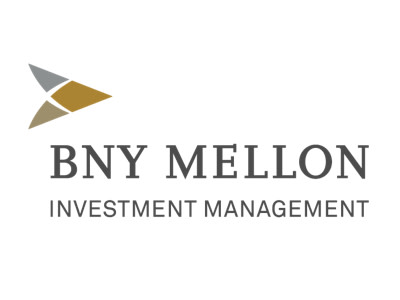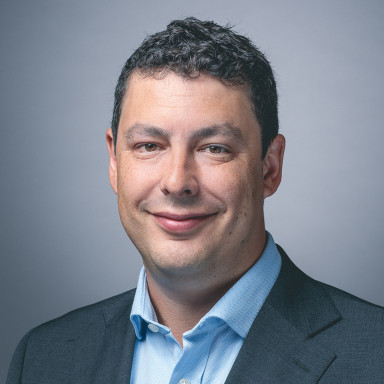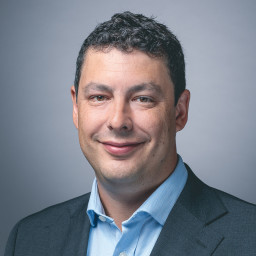The team managing the fund has been through a lot of change recently
Despite the changes, the team remains well resourced
The process continues to focus on losing less during stock market shocks while providing some long-term growth
This fund no longer features our Wealth Shortlist of funds chosen by our analysts for their long-term performance potential
How it fits in a portfolio
The BNY Mellon Real Return (Responsible) fund aims to reduce volatility in an investment portfolio by providing some shelter during market wobbles, while also delivering some long-term growth. It aims to do this in a sustainable way, by investing in companies that comply with their in-house environmental, social and governance (ESG) criteria. This means it could be considered for a more defensive portfolio seeking steadier gains, and those who wish to invest in Responsible funds. It could also be considered for more adventurous portfolios focused on company shares, by providing investments in other asset classes and adding some potential balance.
Manager
Nick Pope joined the Real Return team and took over as manager of this fund in May 2025. As part of these changes, previous managers Matthew Brown and Philip Shucksmith, who had managed the fund since launch in April 2018, no longer have any involvement in the fund and have left the business.
Pope joined Newton in 2011 as a research analyst and began managing funds in 2021. He focuses on selecting which company shares the fund invests in.
BNY Mellon's team-based investment process, however, is built on the principle that the whole is greater than the sum of its parts. The fund’s managed with an investment approach that’s reliant upon the skills and experience of the wider Real Return investment team.
There were a number of changes to the team at the time Pope took over as manager. We view this amount of change as significant and it’s the reason the fund was removed from the Wealth Shortlist. While the new team members have other roles and responsibilities within the wider business, meaning the Real Return (Responsible) fund is not their sole focus, the lead managers have a lot of resource and expertise to call upon.
Overall, while the logic surrounding the team changes seems sensible, it’s too early to tell what the potential impact will be over the long term.
Process
While the team managing the fund has been through a lot of change, the philosophy and processes around managing the fund broadly remain the same.
The team aims to make money in a variety of market conditions. They do this using a mix of assets that broadly fall into two camps. The first is called the 'return-seeking core'. It invests in assets the team think will provide long-term growth, such as shares and bonds issued by well-run, financially secure companies with a unique set of advantages over the competition. They also consider how well those companies manage their impact on the environment and society.
The rest of the fund is called the 'stabilising layer' and invests in government bonds, commodities and cash, with the aim of adding stability to returns. The managers alter the amount invested in each section of the fund depending on their view of the world. The managers also use derivatives within the ‘stabilising layer’ which adds risk.
The team places more emphasis on not losing money than making it. If you lose less money in the bad times, you have less ground to make up in the good times. They use diversification, hedging (investing to potentially benefit in a range of outcomes), and liquidity (investing in things that are easy to buy and sell) to help achieve this, as well as derivatives. The team also has the flexibility to invest in high-yield bonds and emerging markets which, if used, adds risk.
While the team tries not to lose money, the assets they invest in can go down in value. They measure their performance over the long term (five years or longer) against SONIA (Sterling Overnight Index Average) + 4% per annum. SONIA is the rate of interest banks receive when they lend money to each other and is similar to the Bank of England base rate. While the fund aims for long-term growth, it still has the potential to lose value over some shorter time periods.
The fund's sustainable 'red lines' mean companies that violate the UN Global Compact Principles (a UN pact on human rights, labour, the environment and anti-corruption) are not considered for the fund. It also won't invest in companies that make more than 10% of their revenues from tobacco, alcohol, gambling and several other contentious industries. The team engages with the companies they invest in on a range of ESG issues and report on progress in their Responsible Investment Report (available on the BNY Mellon website).
The Responsible Investment team has power of veto over companies held in the BNY Mellon Real Return (Responsible) Fund. This means the final decision is separated from the managers and provides an additional layer of challenge.
The split of investments in the fund between the return seeking core and the stabilising layer is roughly the same at the end of September 2025 as it was at the time of our last review in October 2024. It had 67.6% invested in the return seeking core at the end of September and 32.4% in the stabilising layer.
Within the return seeking core, the managers have reduced investments in shares and increased the amount invested in emerging market debt and corporate bonds. Within the stabilising layer the team have increased the amount invested in government bonds and reduced the amount in cash.
Overall the team have been active in altering their investments within the fund, both before and after the changes to the management team. This is fairly typical for a fund that has such a large potential universe of investments, particularly during volatile markets.
Culture
BNY Mellon is a large, US-based firm so the managers have a lot of resources at their disposal. Newton Investment Management is owned by BNY. Until mid-2019 they were part of the Newton brand, but even though the name has now changed to that of the parent company, the way the managers run the fund remains the same. This integration was continued in September 2021, when Mellon Investments merged its equity and multi-asset teams into Newton. This has given the team access to a larger pool of research analysts.
We like that the fund managers are incentivised in a way that aligns their interests with those of long-term investors. However there have been some significant fund manager departures in recent years and we continue to monitor this situation closely.
ESG Integration
The team at BNY Mellon (formerly Newton) believes responsibly managed companies are better placed to achieve sustainable competitive advantage and provide strong long-term growth. While they’ve invested time and resource into their Responsible Investment proposition in recent years, we’re disappointed to note the departure of Therese Niklasson earlier in 2025, someone we’ve long held in high regard.
A dedicated Responsible Investment team exercises the firm’s voting rights, coordinates engagement with investee companies and contributes to public debate on ESG matters. The team reports on their engagement progress in their annual Sustainability and Stewardship report, and their quarterly ‘ESG meeting activity’ report (both available on the Newton website). They also offer a voting dashboard, which provides fund-by-fund search functionality and detailed rationales for votes against management and abstentions.
All fund managers have access to a variety of tools, including a “Responsible Investment reviews” app which centralises a variety of research providers’ data, as well as their own, to help identify material ESG and sustainability issues for a single company, and a ‘net zero assessment’ tool assesses credibility of each company’s net zero transition plan. The firm has also launched a Stewardship app, a database which allows the team to better track progress on their engagement objectives, as well as outcomes from their engagement and voting activities.
In recent years, the firm has launched a sustainable range of funds which take ESG analysis further. They utilise the firm’s thematic research framework to identify and exploit sustainable investment themes. Within the Sustainable range, the Responsible Investment team has power of veto over companies held in the portfolios. This means the final decision is separated from the managers and provides an additional layer of challenge.
Overall we think ESG risks are at the heart of this fund’s process of choosing which investments to use.
Cost
This fund is available at an annual ongoing fund charge of 0.85%, but HL clients benefit from an ongoing saving of 0.20%. This means you pay a net ongoing charge of 0.65%. Part of the fund discount is achieved through a loyalty bonus, which could be subject to tax if held outside of an ISA or SIPP. The HL platform charge of up to 0.45% p.a. also applies, except in the HL Junior ISA, where no platform fee applies.
Please note the fund's charges can be taken from capital. This increases the yield but reduces the potential for capital growth.
Performance
Since launch the fund hasn’t performed as well as its official benchmark, SONIA +4%*, although it’s ahead of peers in the IA Targeted Absolute Return sector. However given the recent team changes, performance for the majority of this period is not attributable to the current manager or real return team. Past performance is not a guide to the future. All funds will rise and fall in value, so you could get back less than you invest.
SONIA + 4% per year can be a high bar for a fund that places most emphasis on not losing money during market wobbles. SONIA moves in line with interest rate changes, so when rates are higher as we’ve seen in recent years, the fund’s performance hurdle is also higher. This makes it more challenging for funds that tend to be defensively positioned.
Overall, we expect this fund won’t lose as much as stock markets during market shocks and over the long term will generate positive returns with less ups and downs than shares.
Over the past 12 months, the fund’s provided positive returns but has underperformed both its benchmark and peers. The biggest contribution to performance has been the investments in shares, while investments in precious metals have also been particularly positive.
In terms of negatives, some of the derivatives the team use to provide protection in the event of a large market sell off provided a negative return.
At the end of August 2025, the fund had an historic yield of 2.74%. Yields are not an indication of future income and are not guaranteed.
Annual percentage growth
Sept 2020 – Sept 2021 | Sept 2021 – Sept 2022 | Sept 2022 – Sept 2023 | Sept 2023 – Sept 2024 | Sept 2024 – Sept 2025 | |
|---|---|---|---|---|---|
BNY Mellon Sustainable Real Return | 9.32% | -9.99% | -2.34% | 10.38% | 5.60% |
SONIA + 4% per year | 4.05% | 4.74% | 8.10% | 9.30% | 8.53% |
IA Targeted Absolute Return | 6.55% | -1.98% | 3.70% | 7.93% | 6.81% |


